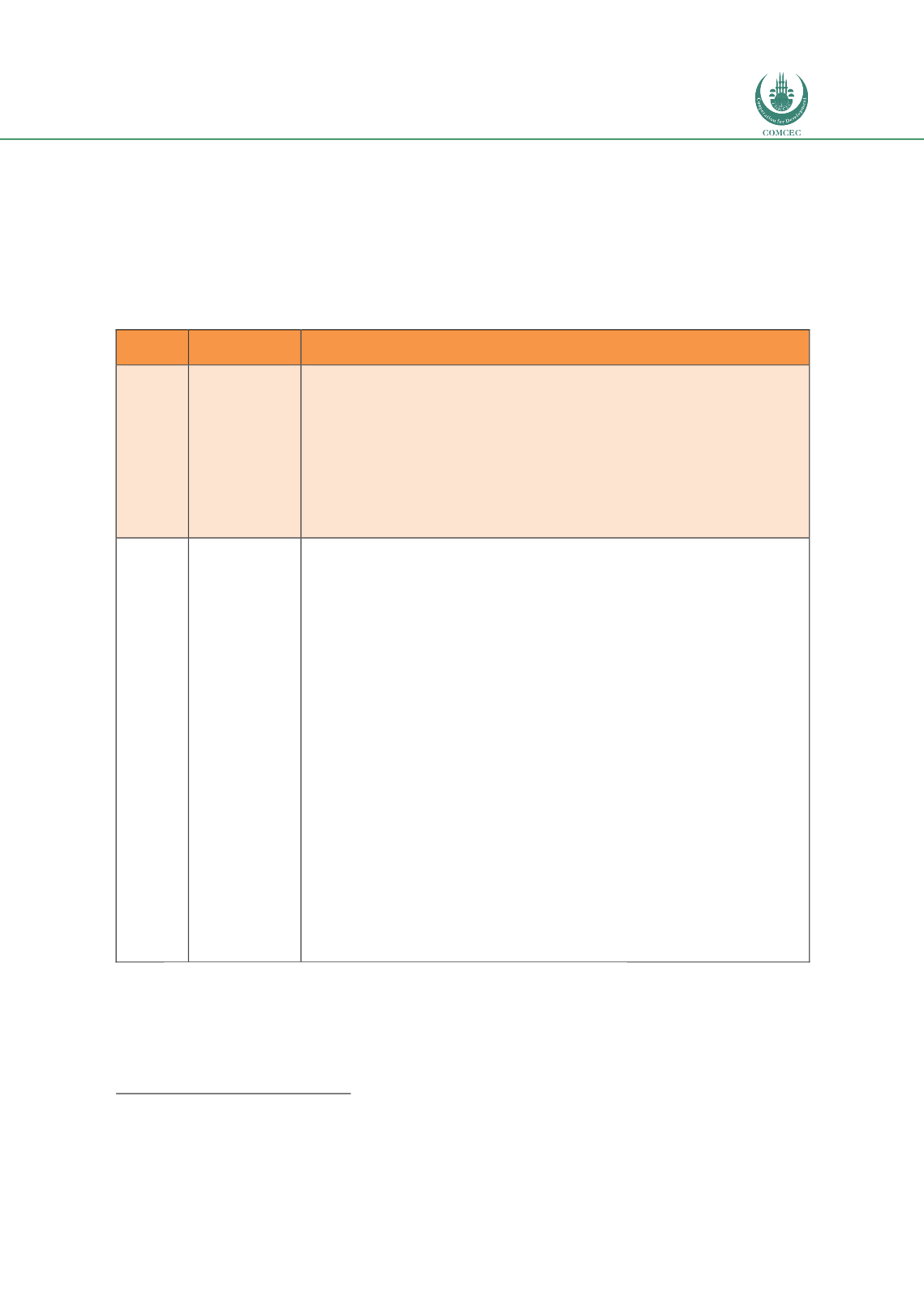

Improving Transnational Transport Corridors
In the OIC Member Countries: Concepts and Cases
131
Reduction Strategy
61
the need for regional integration to reduce transport costs and stimulate
trade and jobs was very prominent.
To conclude, the three main participating countries have embedded many of the principles of
regional integration and transport corridor development into their national plans, as
summarized in the table below.
Table 39: Corridor Features in National Transport Plans of Corridor Countries
Country Document
reviewed
Transport and corridor development features
Kenya
Kenya
Integrated
National
Transport
Policy (2009)
It recognizes that trade within the Common Market for Eastern and Southern
Africa (COMESA), which currently absorbs about 70 % of Kenya’s total exports
(2007) and where Kenya is a net exporter, is expected to grow considerably.
Similarly, following 28 efforts to achieve a Customs Union among member
States of the East African Community (EAC) and the accession of Rwanda and
Burundi as its full members in (2007) trade within the EAC is also expected to
increase substantially, given the rising demand for Kenyan goods in these
countries as they also make efforts to develop their economies. Both import
and export volumes are expected to rise substantially.
Rwanda
Rwanda
Strategic
Transport Plan
– Economic
Development
& Poverty
Reduction
Strategy
Transport Strategies of the reduction of non-tariff barriers are, among others,
as follows:
To achieve and implement uniform transit transport policies and
regulations by the member States;
To take regional initiatives to reduce transit time in sea ports Strategic
Transport Plan for EDPRS2;
To take regional initiatives to expand the capacity of sea ports;
To establish an efficient customs transit regime;
To reduce time and costs associated with transporting goods along the
international corridors ;
To ensure faster clearance of Cargo from its discharge to exit at the port of
Mombasa and Dar es Salaam;
To ensure border crossings posts operating and working 24 hours a day
along international corridor routes;
To provide up-to-date information on stops, bribes, time delays, costs,
security and safety encountered along the international corridor;
To operationalize real-time information on stops and time delays
monitoring on transport observatories;
To develop improved quality of communications and advocacy with
stakeholders;
To establish more One-Stop Inspection Stations;
To introduce Electronic Cargo Tracking System (ECTS) Inter-face
(Interconnectivity) amongst Tanzania, Rwanda, Uganda and Burundi.
Source: Fimotions (2017), retrieved from national transport policies of each country.
61
Transport Sector Strategic Plan for Economic Development & Poverty Reduction Strategy EDPRS2
















